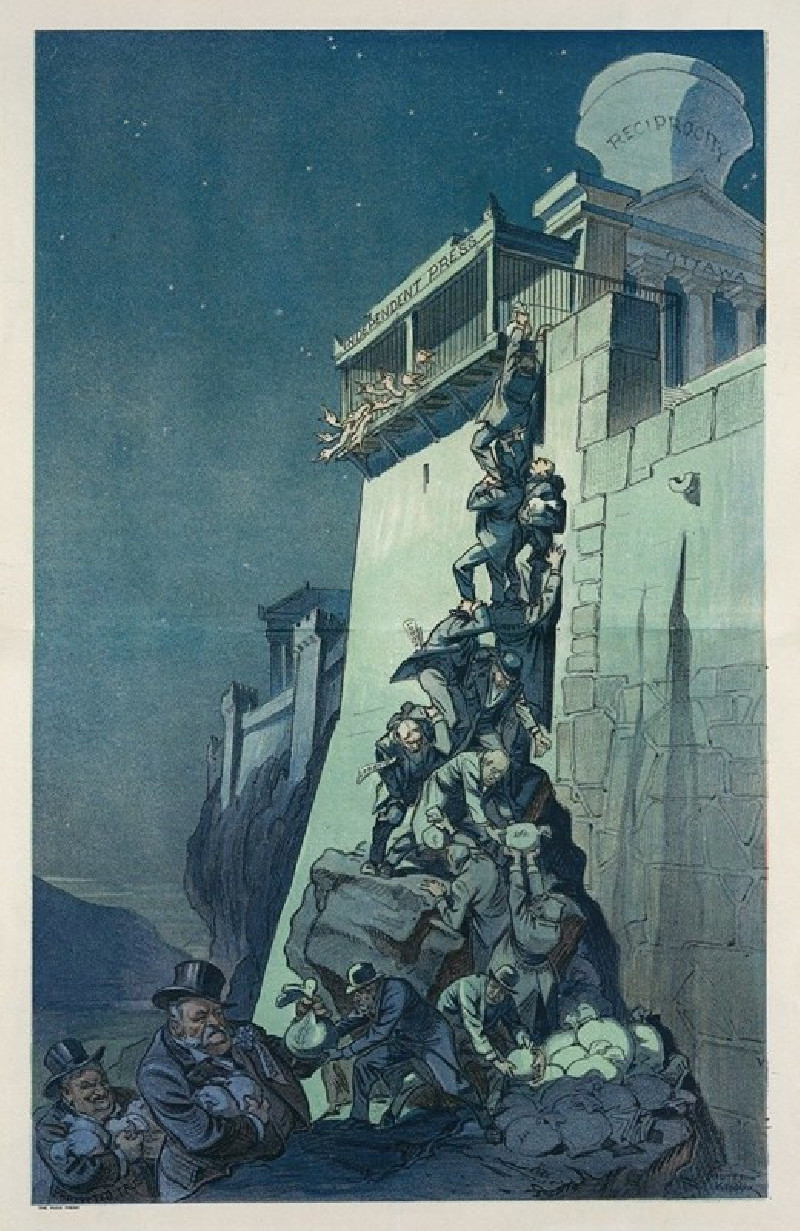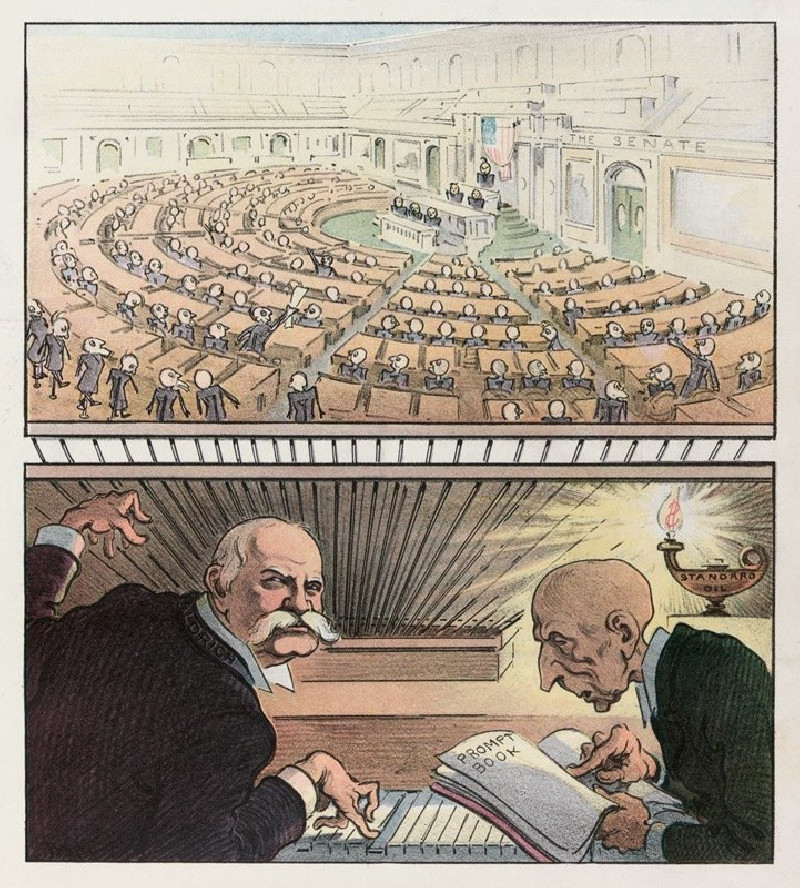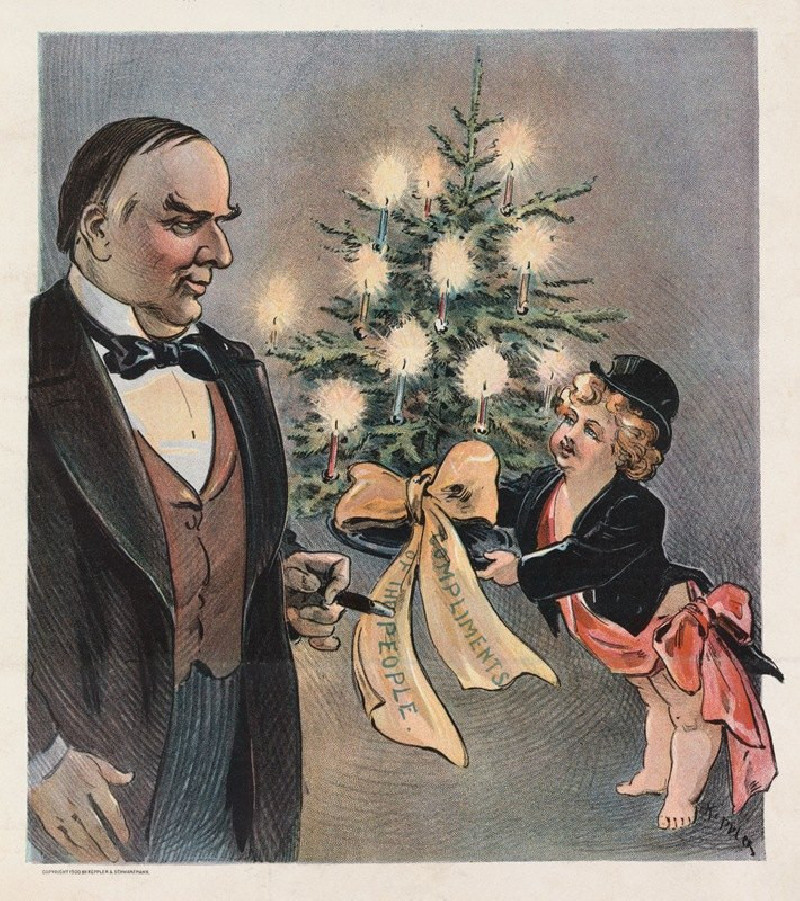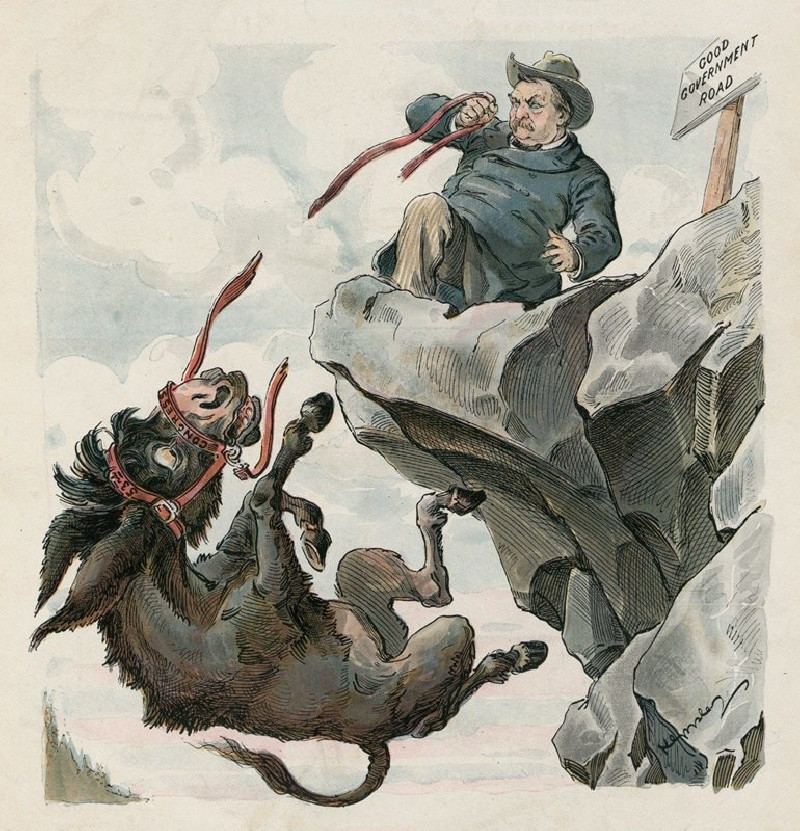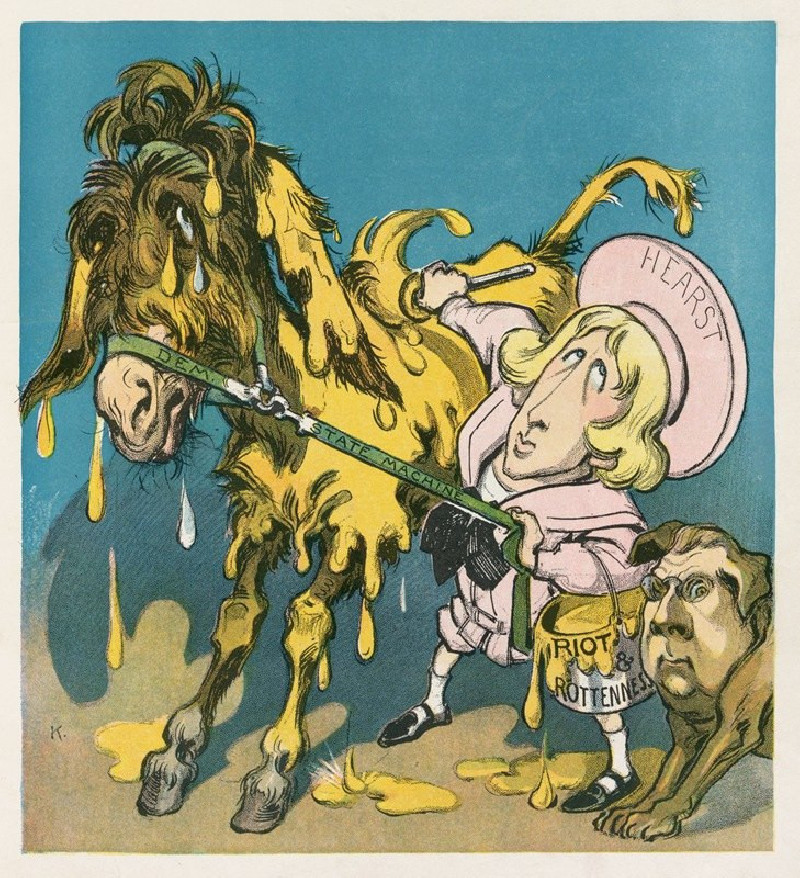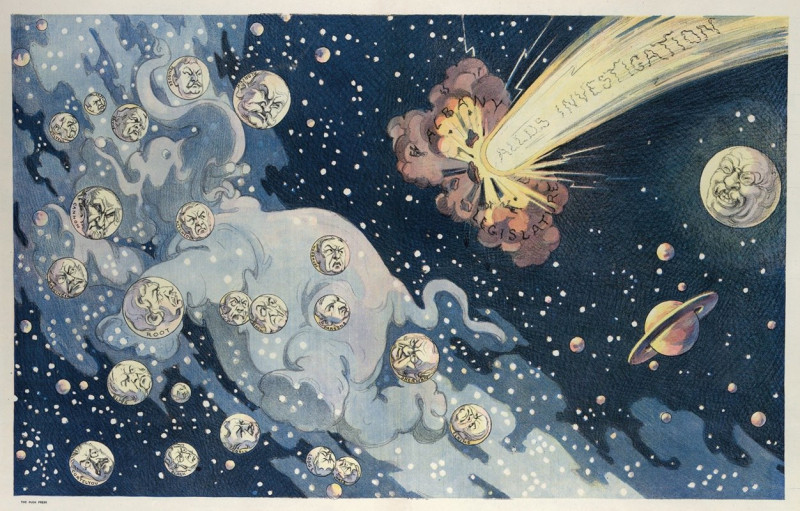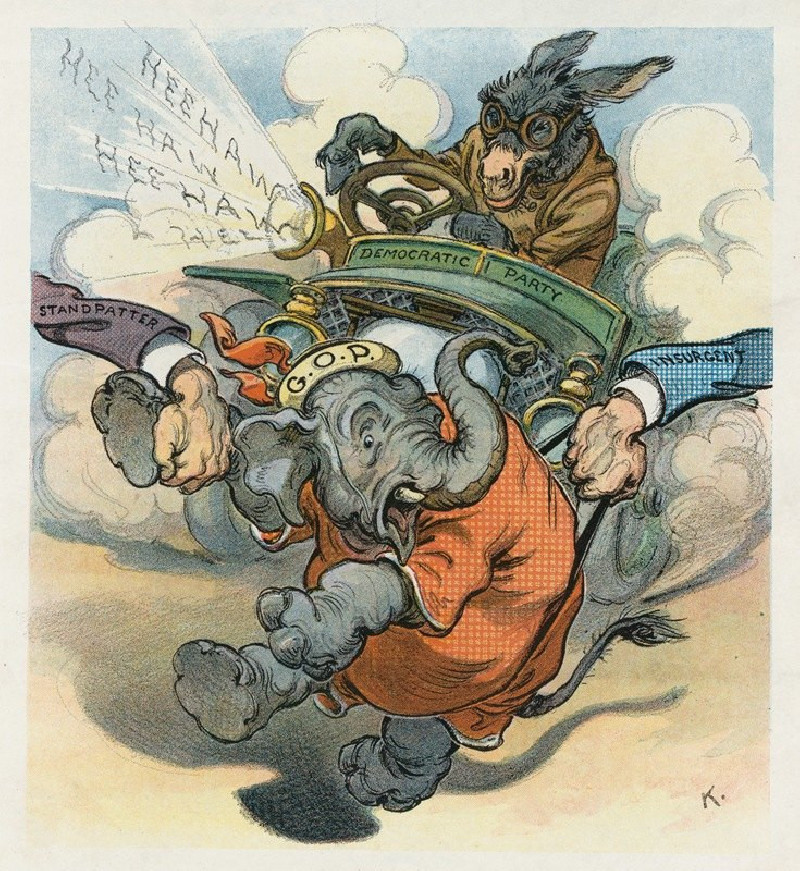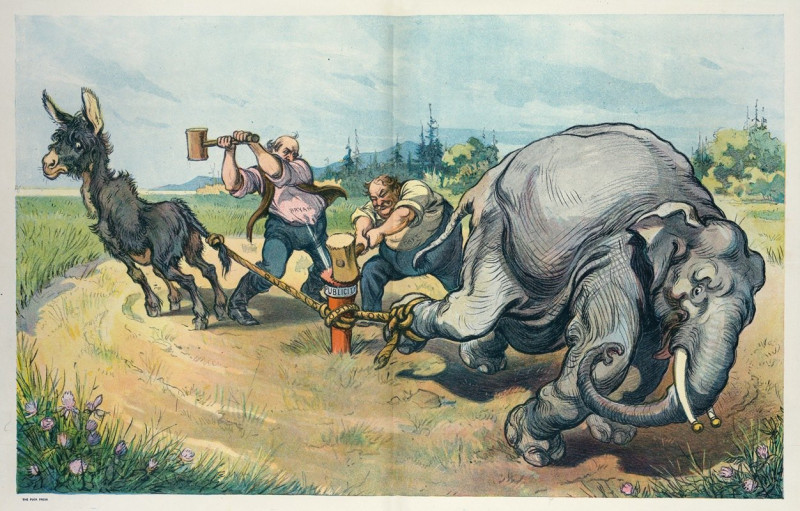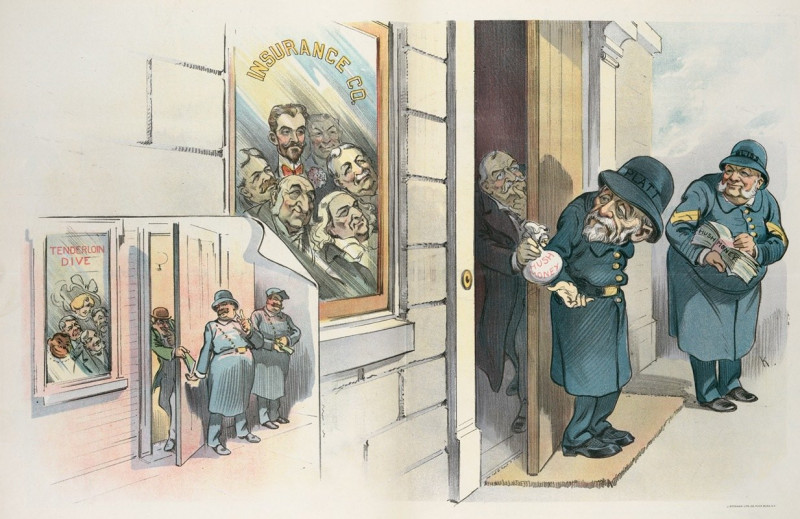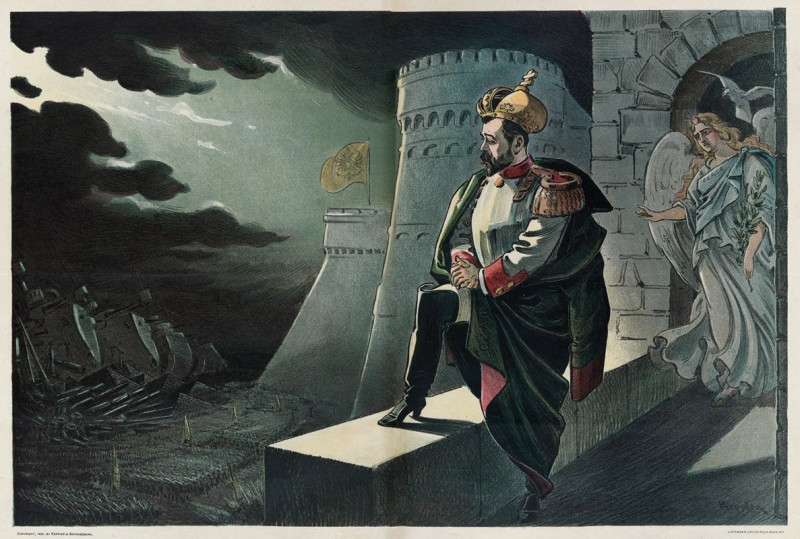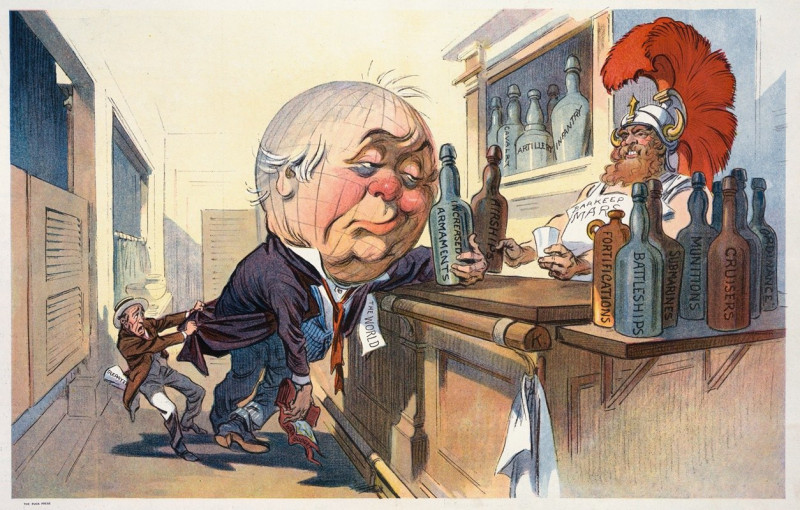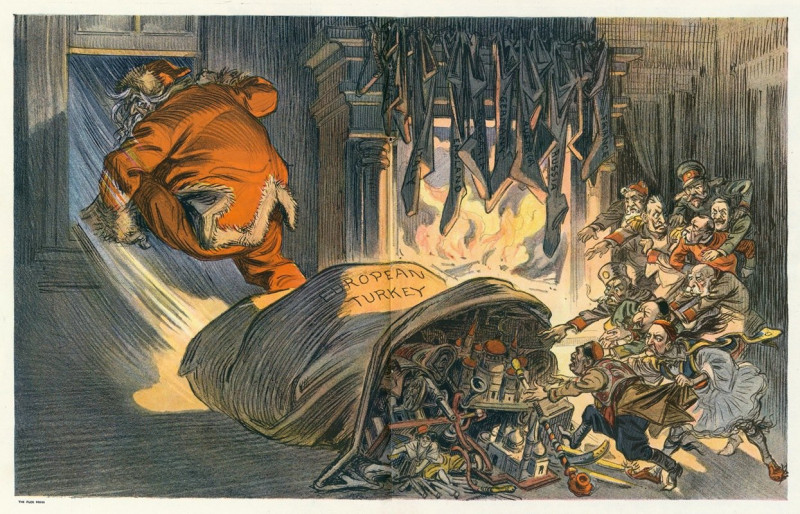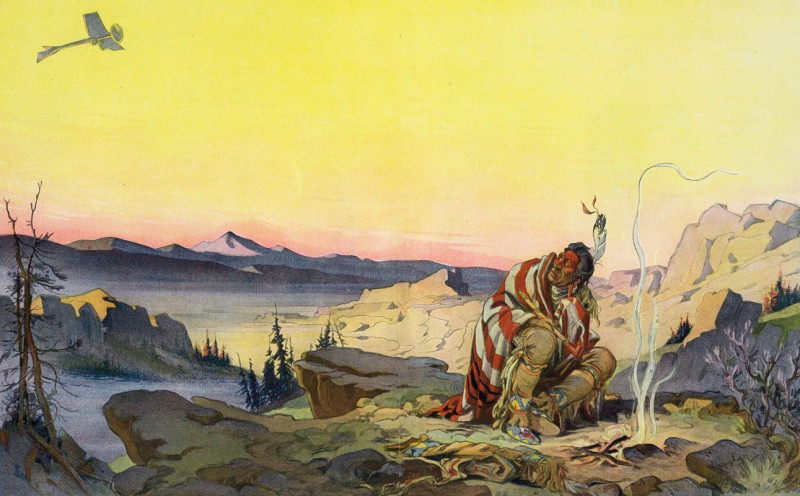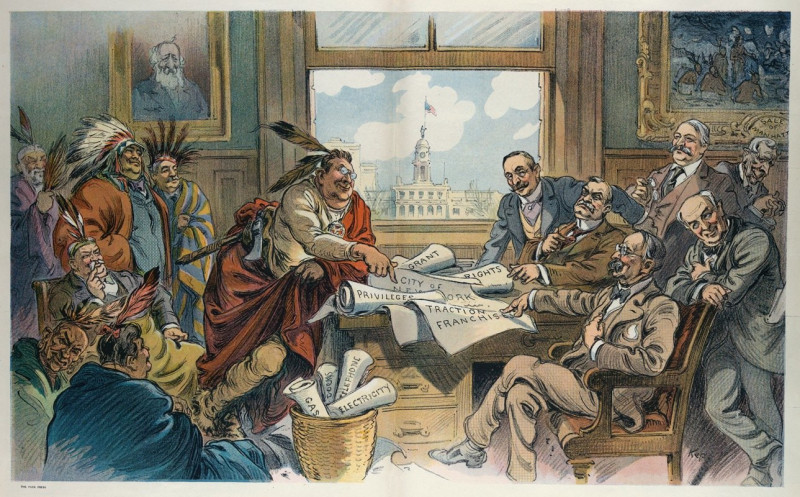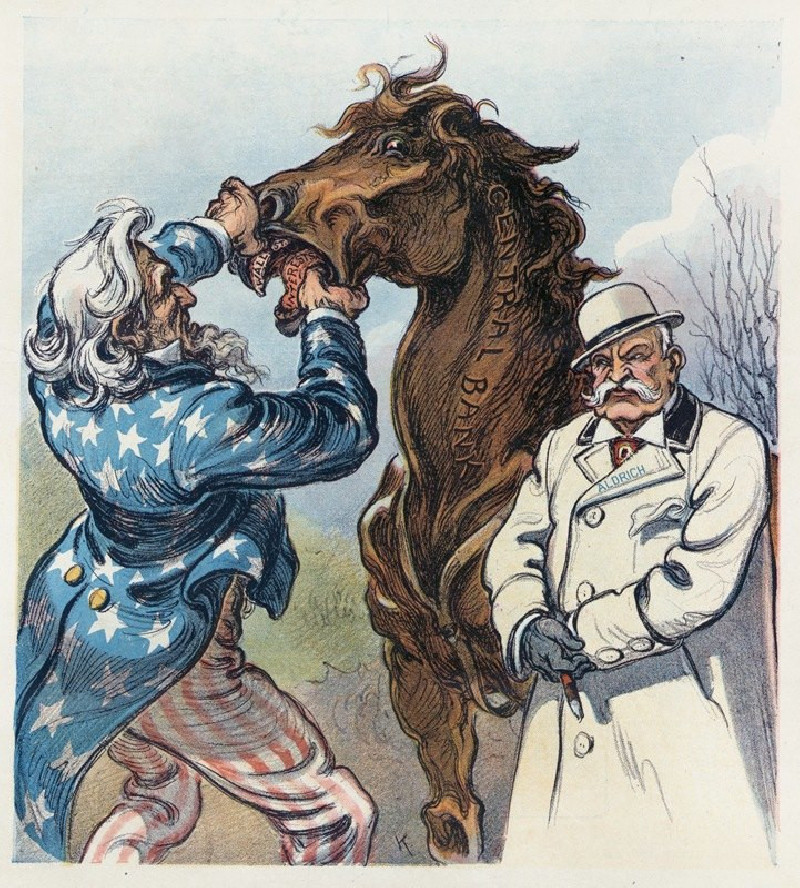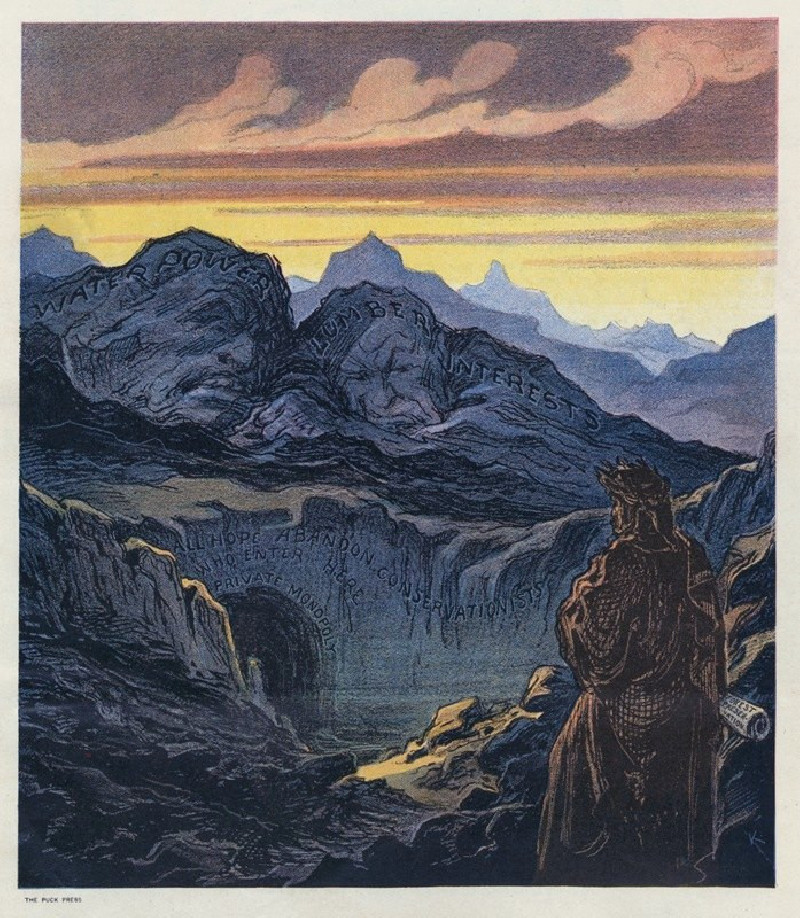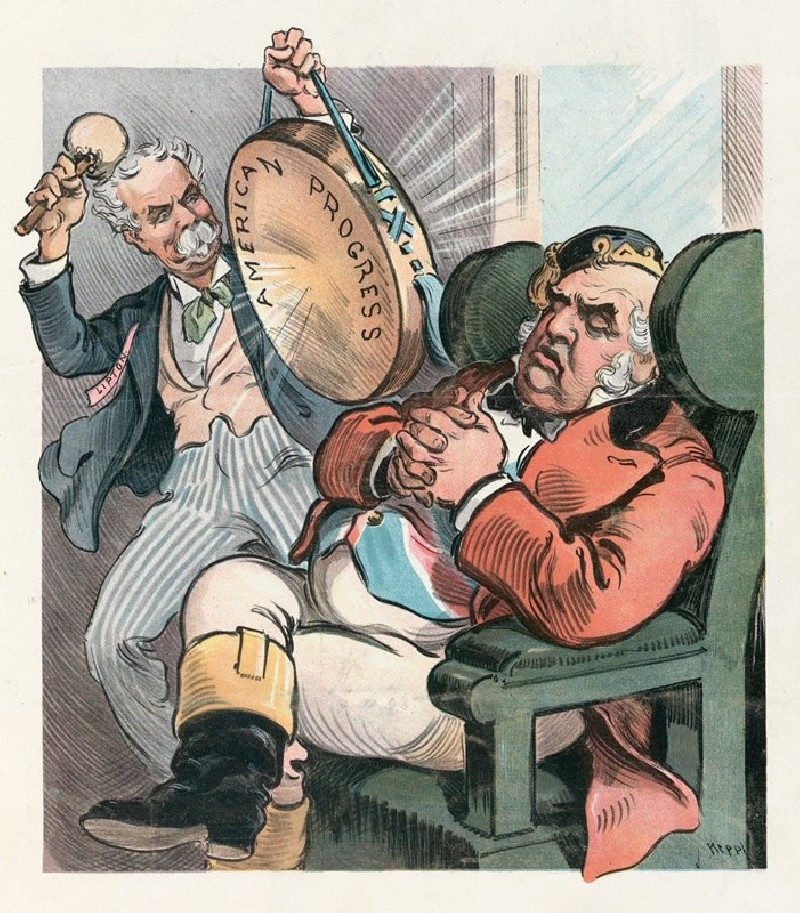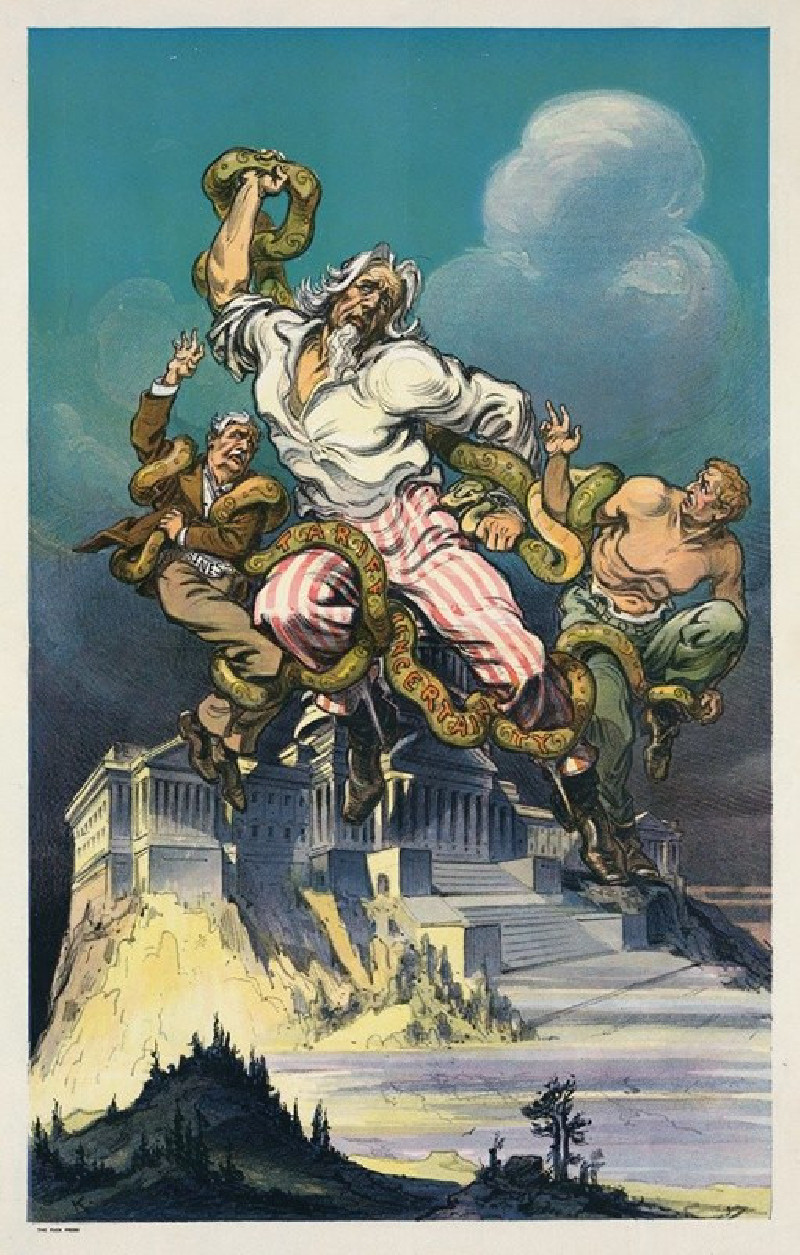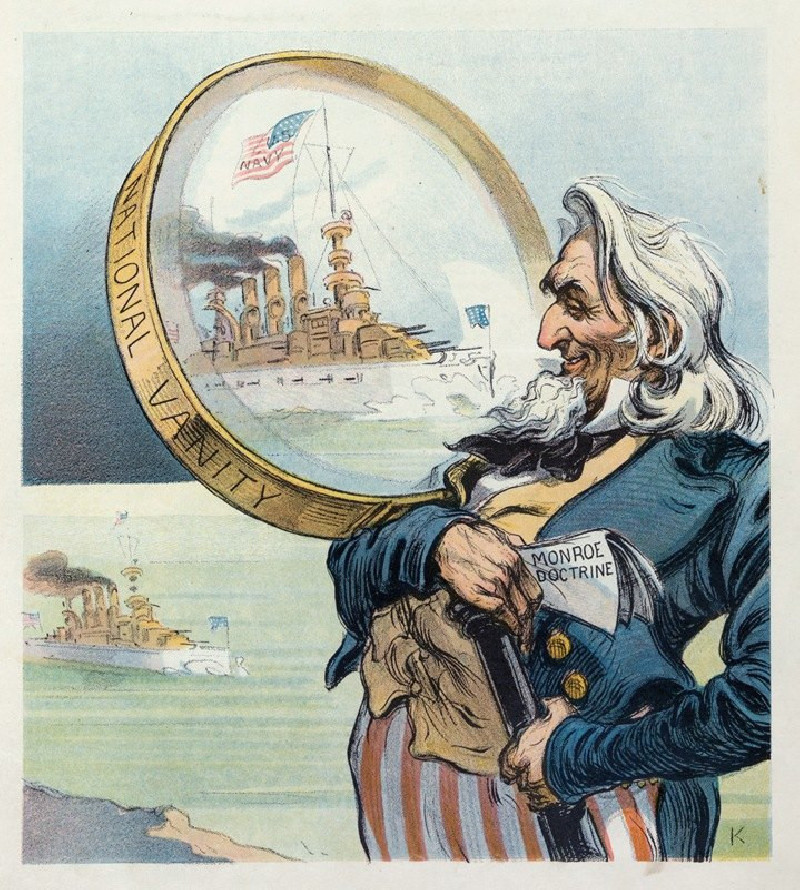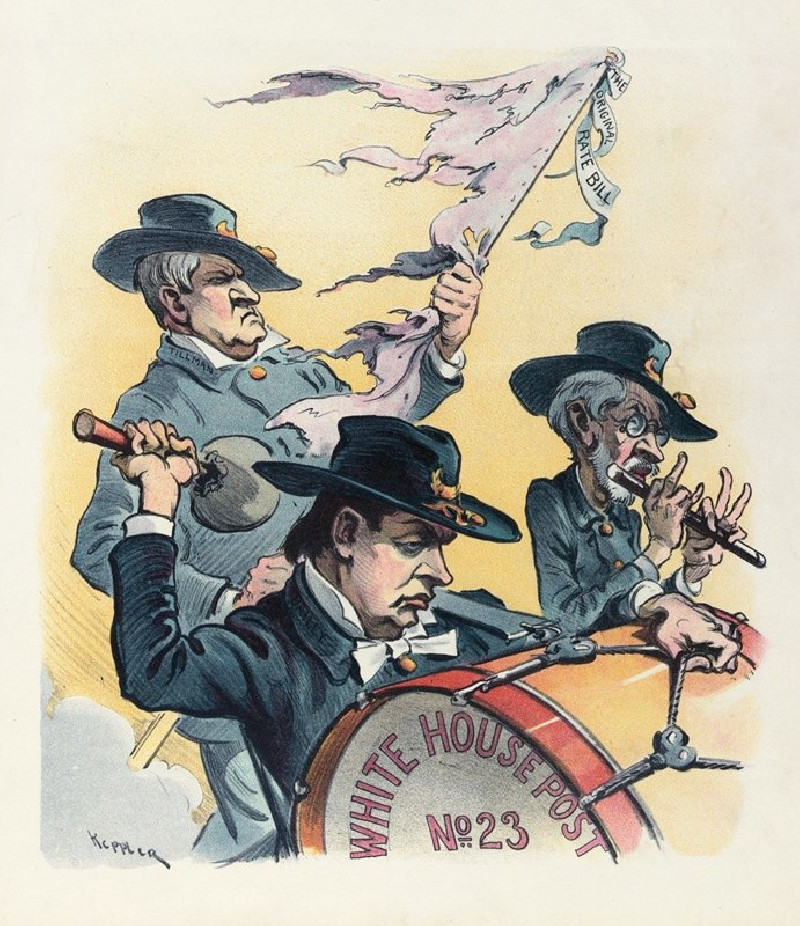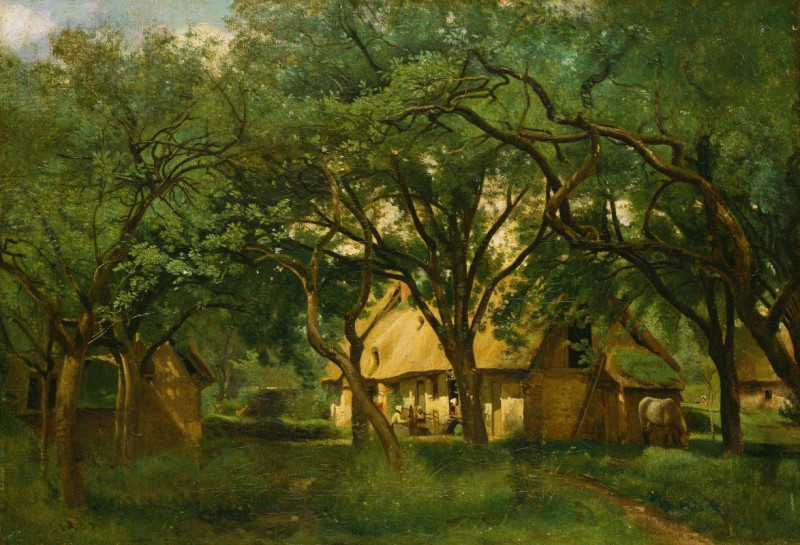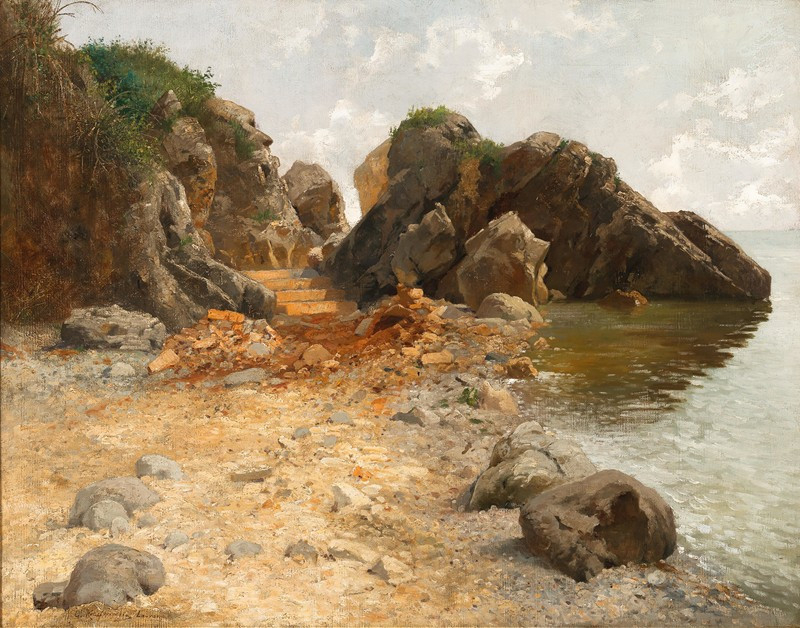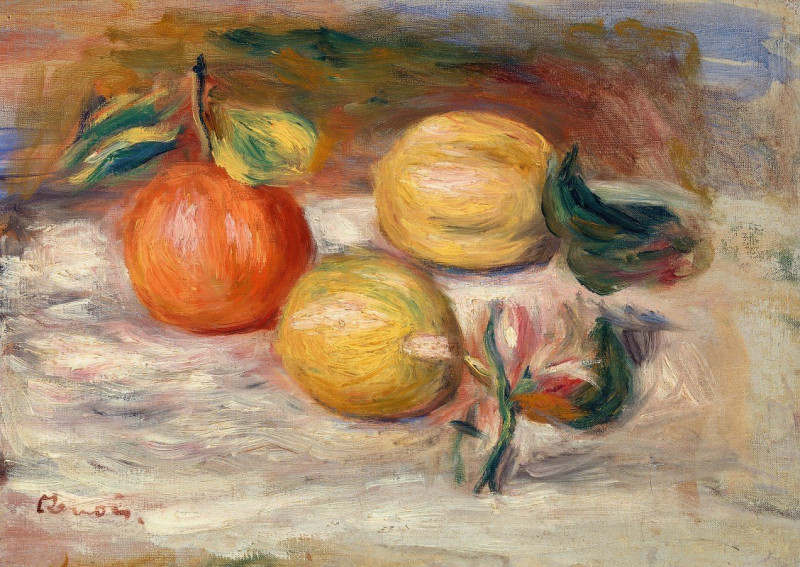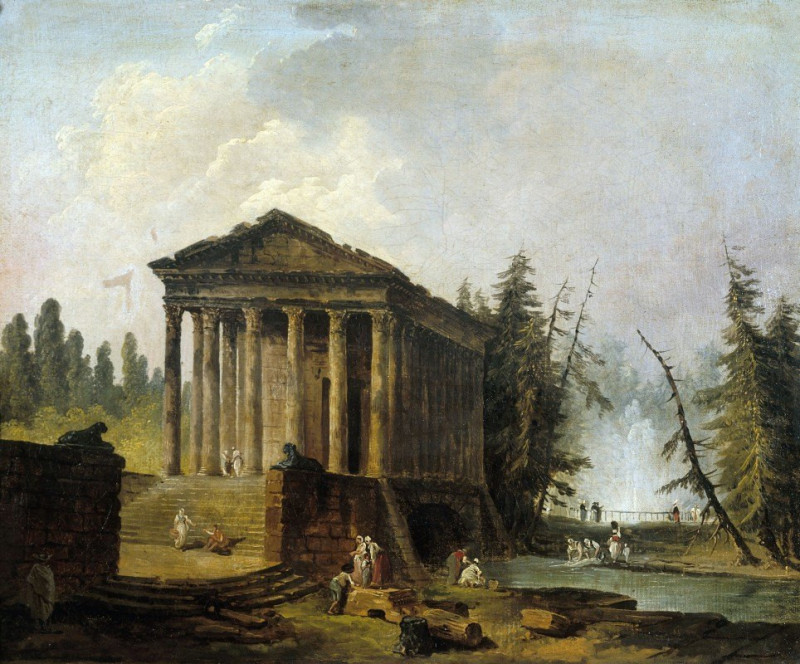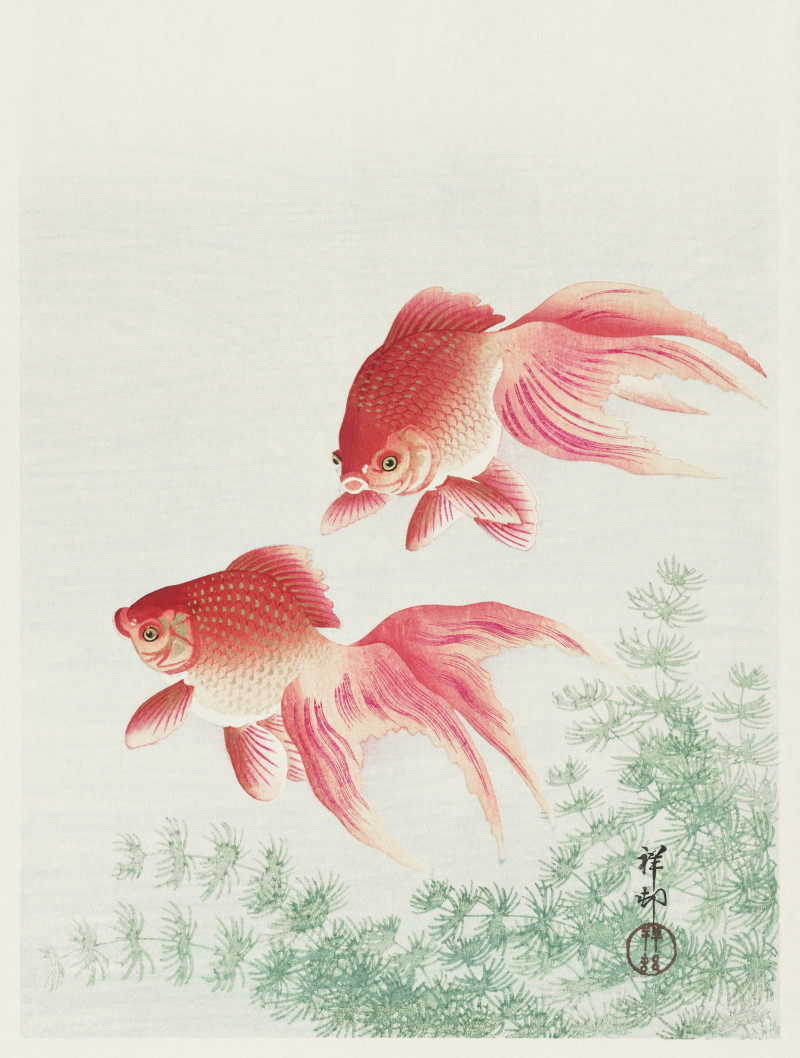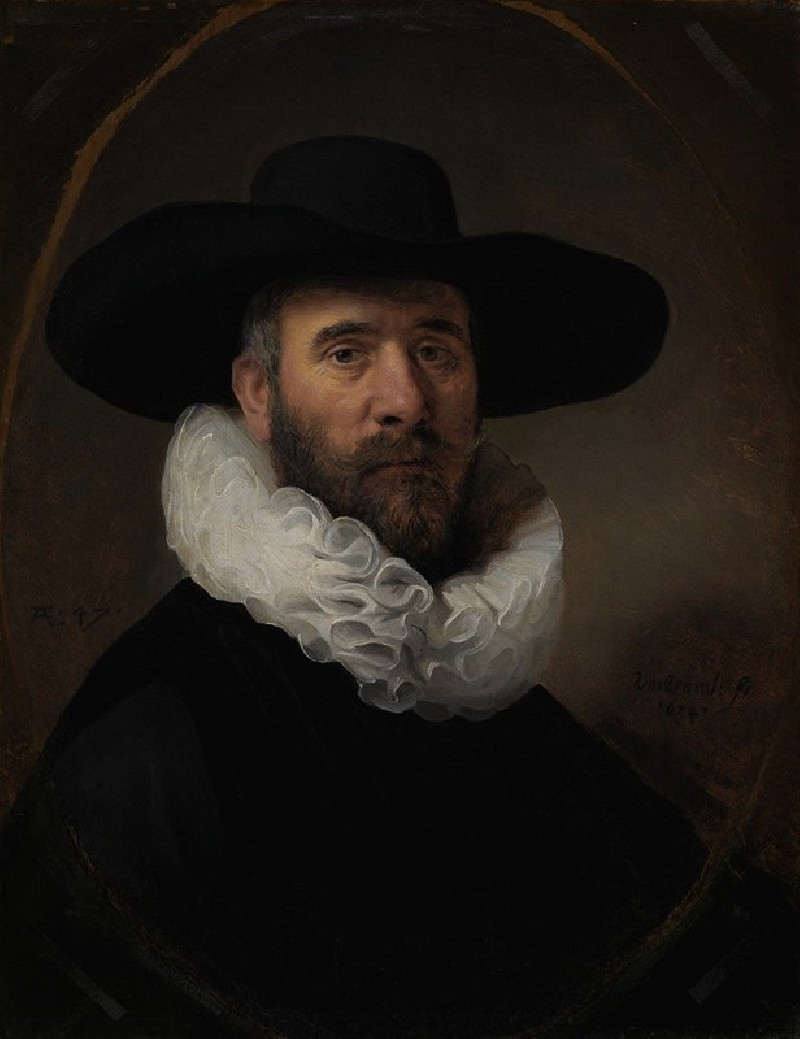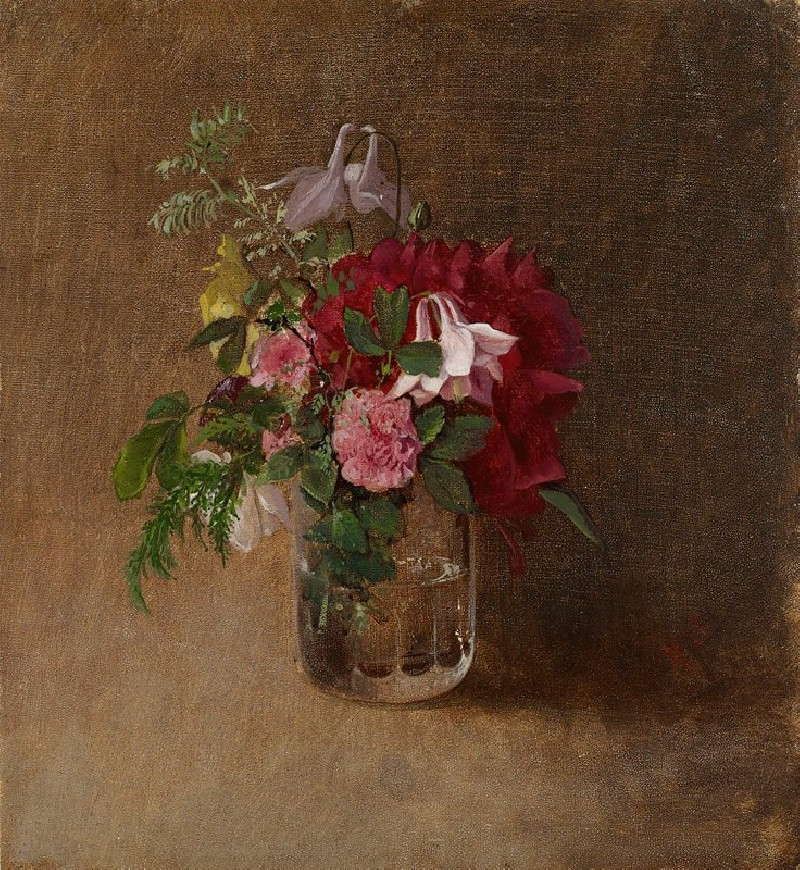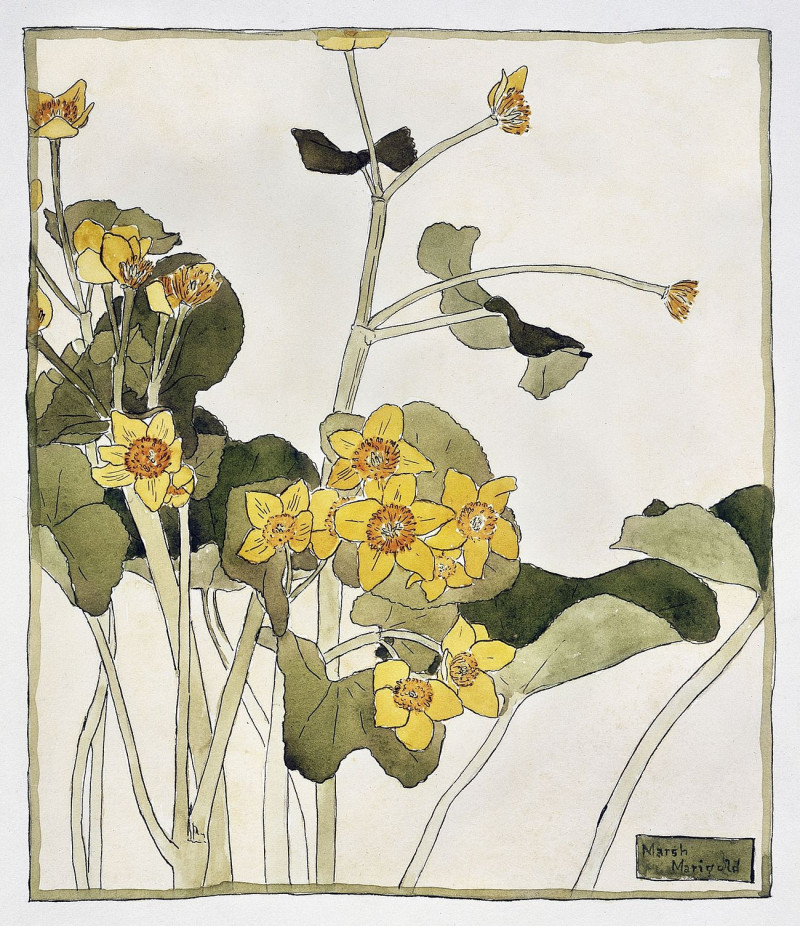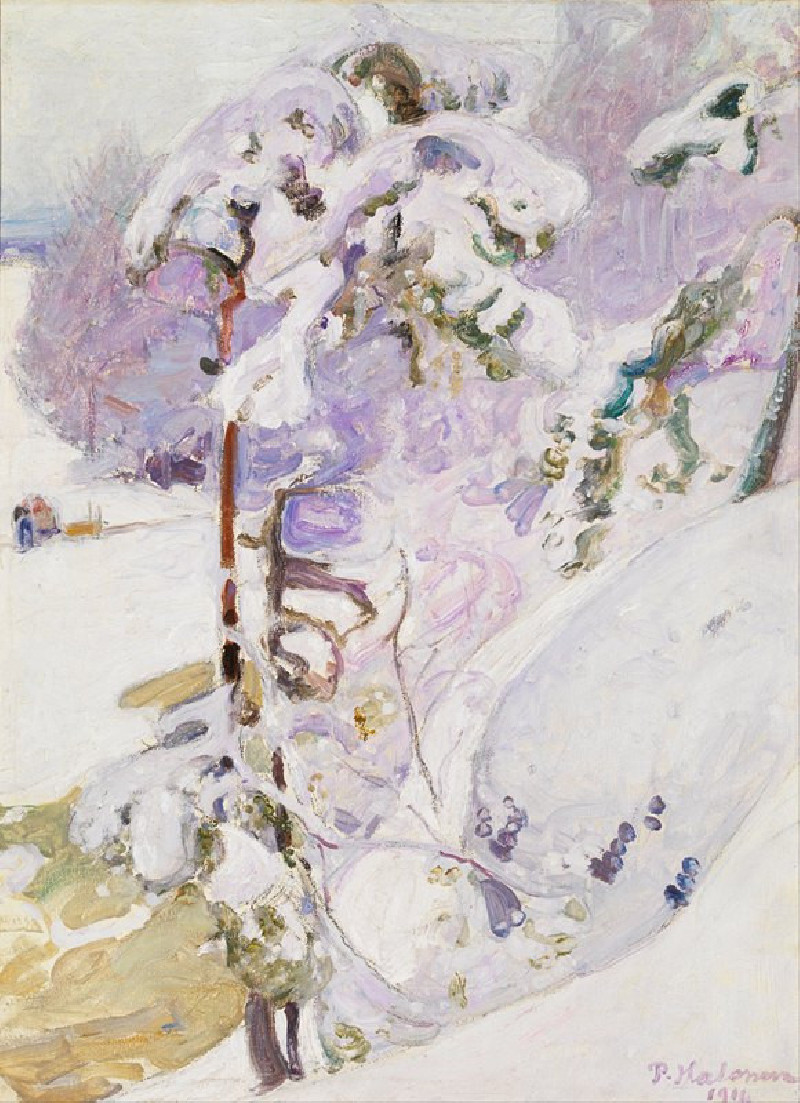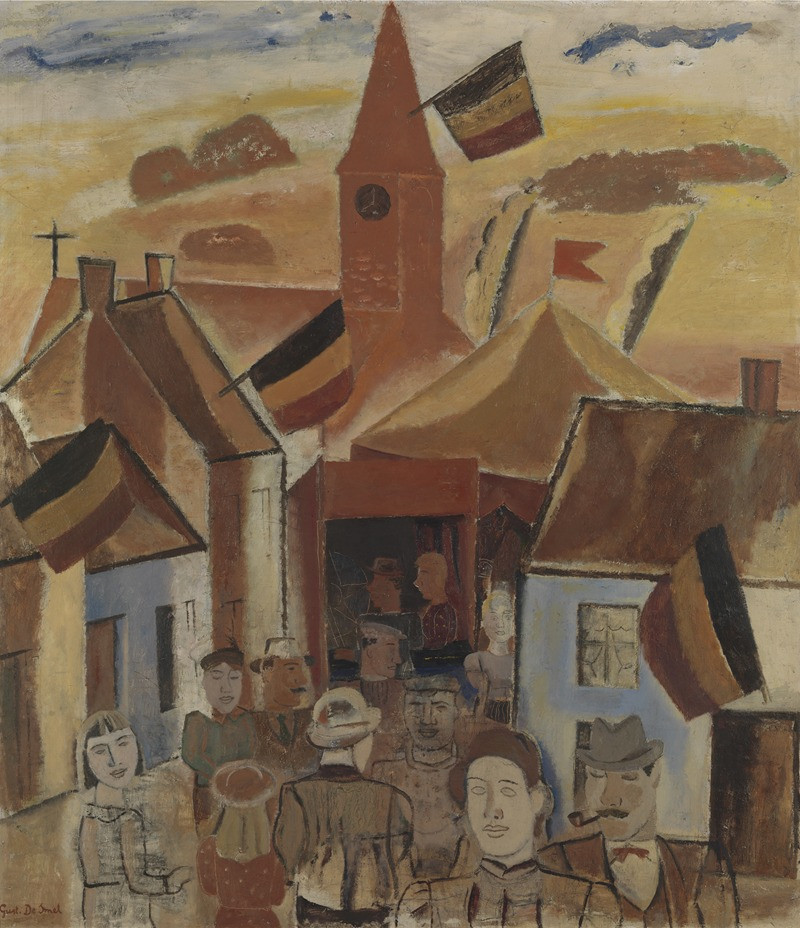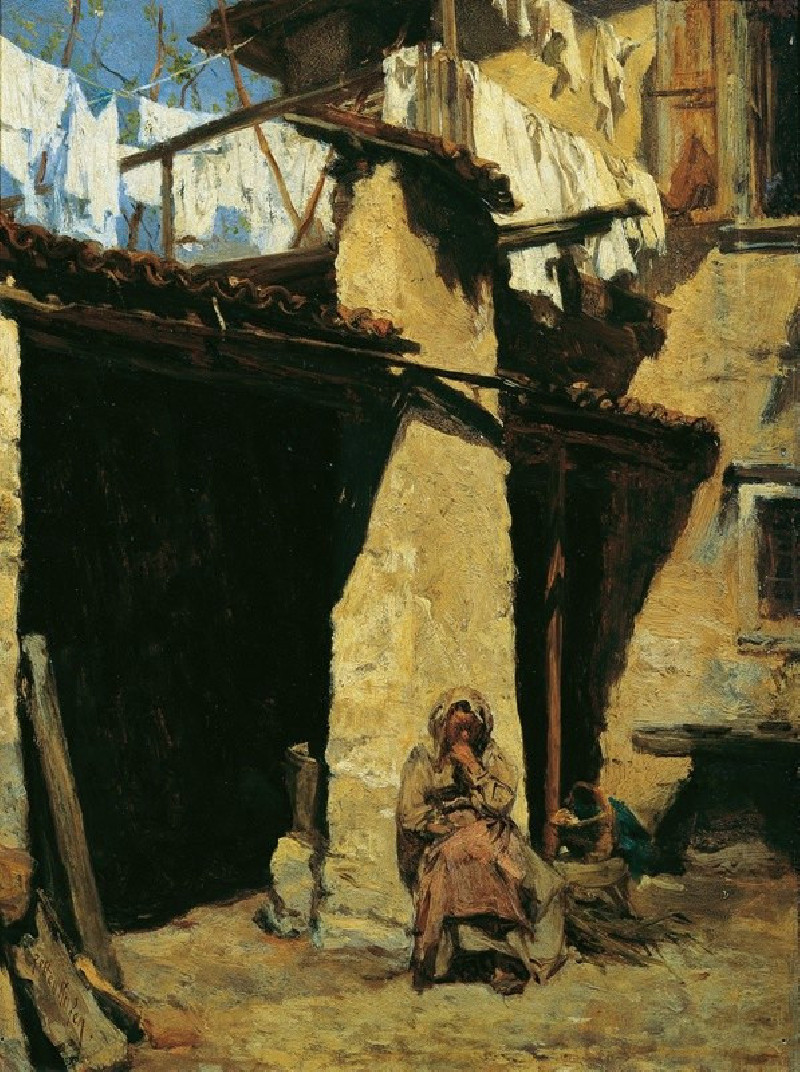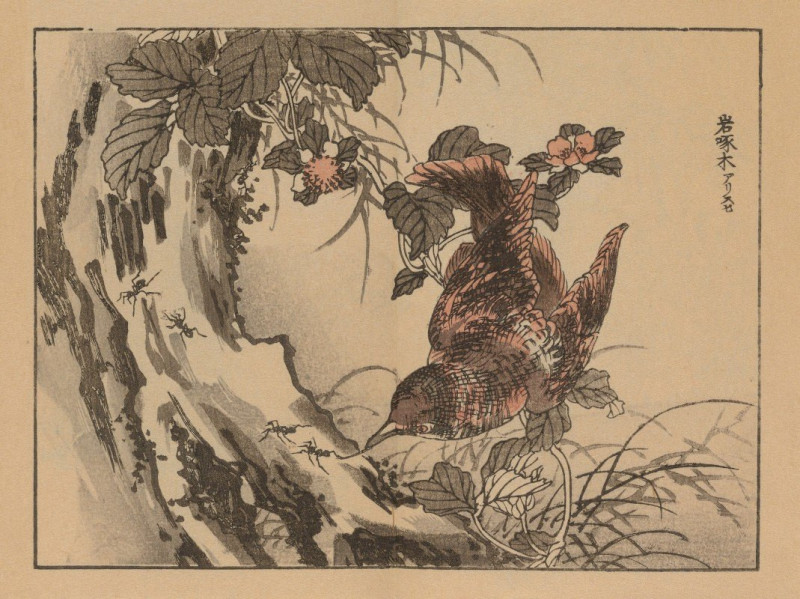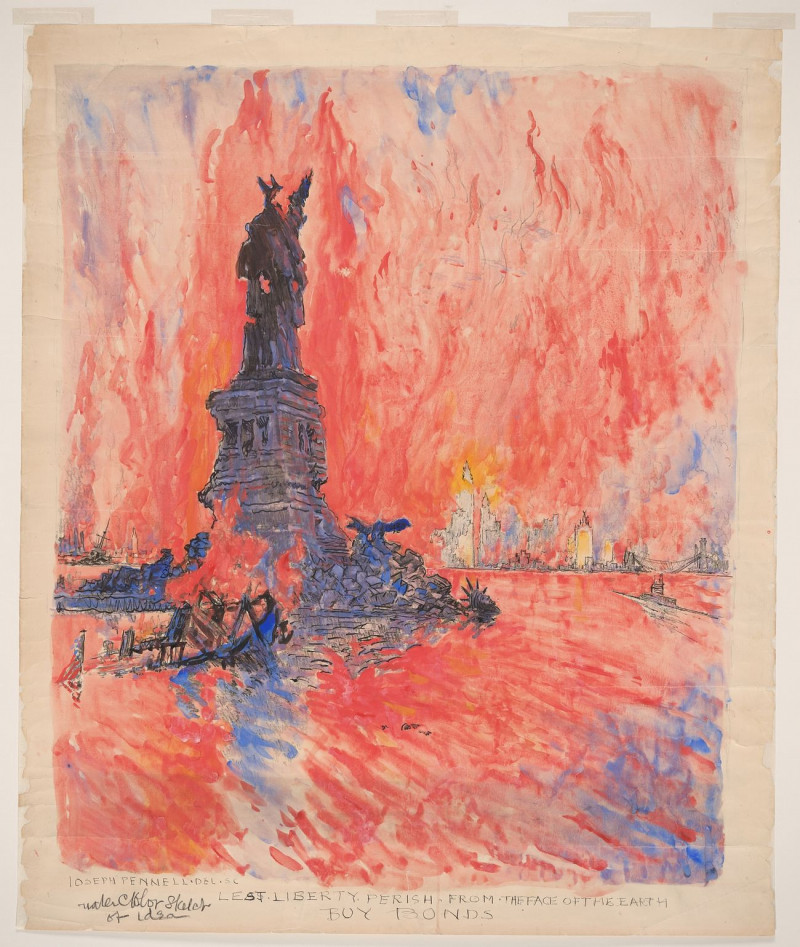The new nationalism (1910)
Technique: Giclée quality print
Recommended by our customers
More about this artwork
"The New Nationalism" (1910), a captivating piece by artist Udo Keppler, offers a poignant critique wrapped in striking visual symbolism. The painting depicts a chilling, larger-than-life figure draped in robes, with a disconcerting smile and sinister gaze, holding a torn flag labeled "LAW." This haunting central figure, whose presence dominates the composition, appears to embody corruption or the perversion of legal and governmental principles.Kneeling at the figure's feet is a young child, whose expression and posture suggest distress and subservience. In his hands, he holds a small whip, perhaps indicating his powerless entanglement or enforced participation in the overarching system of skewed justice and governance symbolized by the looming figure above.The use of dark greens and blues in the background contributes to the overall atmosphere of foreboding and decay, reinforcing the critical tone of the work.
Delivery
Returns
Udo J. Keppler, since 1894. known as Joseph Keppler, Jr., was an American political cartoonist, publisher, and Native American advocate. The son of cartoonist Joseph Keppler (1838–1894), who founded Puck magazine, the younger Keppler also contributed to cartoons, and after his father's death became co-owner of the magazine under the name Joseph Keppler. He was also a collector of Native American artifacts.


